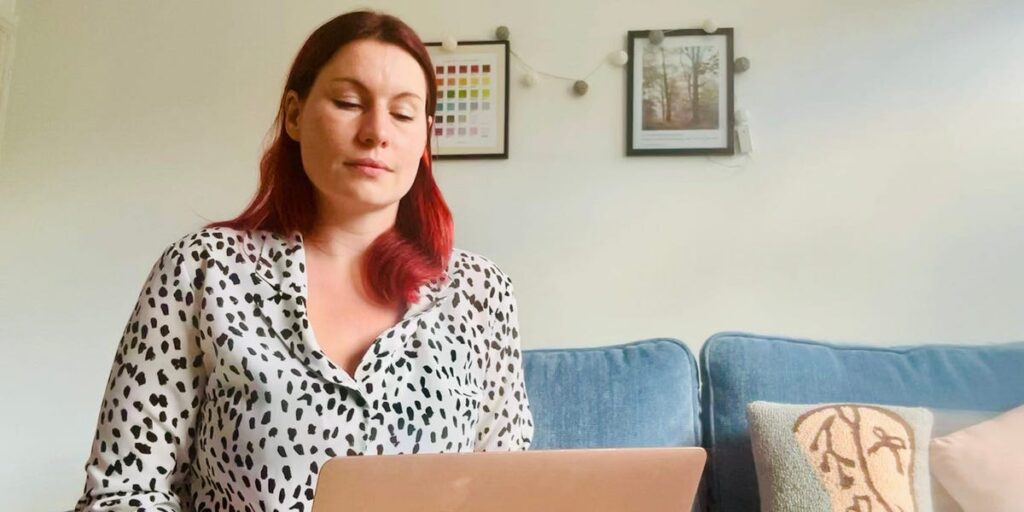What would the 20-year-old me think of how far I’ve come?
In the past 15 years, my achievements include, but are by no means limited to: writing for well-known publications including “Psychologies” and “Cosmopolitan,” creating a successful freelance career without stepping foot in an office, and buying my first home at 30. By all accounts, I should be positively delighted.
And yet, I’m one doom-scroll away from throwing my laptop out of the window — figuratively speaking, of course. Whenever I open LinkedIn, my stomach and self-esteem drop through the floor. The conveyor belt of horrors: A 20-something who just landed a book deal, a former classmate announcing their latest promotion, or a digital nomad living out their dream of traveling the world.
My bylines pale in comparison to their wins, and I feel numb. But then, I keep coming back.
I started comparing my career to everyone else’s highlight reel
I can’t pinpoint the exact moment that LinkedIn became part of my daily routine. It was a slow creep. Initially, I’d check it occasionally — maybe once a week — to see if I had any new connection requests. I’d browse the feed to see if any editors or managers were looking for writers, and maybe I’d send them a DM. It was light and breezy.
But then, around 2023, I started to notice a change. The platform seemingly morphed into a bragging contest.
My feed was suddenly alive with the sound of professionals telling the world they’d smashed their latest sales target, or screaming about ditching the corporate world to start their own coaching business. Likes, follows, and comments ensued.
It was like Facebook 2.0, only now with a shiny business angle. I had to wade my way through these posts to find anything of real substance and, like any of us would, I started comparing my professional life to these highlights. It was a lot.
I turned to a professional for guidance
To help me understand why this was impacting my self-esteem so much, I reached out to Jackie Daniels, director of clinical development at the Indiana Center for Recovery.
“Social comparison theory basically says we judge how we’re doing by looking at other people,” explained Daniels “On LinkedIn, that turns into a nonstop feed of comparisons from others’ filtered professional lives with users posting content such as promotions, awards, and humble brags.”
The platform seemingly rewards virality leading to clickbait-esque posts. The more outrageous your boast or unpopular your opinion, the more likely you are to gain traction and, ultimately, be seen by your peers.
As far back as I can remember, I’ve been led to believe that networking is the answer to career success. With all that in mind, it’s not hard to see why for some, like me, LinkedIn can seem like a home for endless self-congratulatory posts.
The compulsion to check it is real, even when it hurts
With each post I view, my heart races and my own sense of accomplishment shakes. I’ll usually close the browser, and breathe, only to reopen it again in 20 or so minutes.
“When people feel anxious about LinkedIn, they often check it more because they are looking for relief,” explained Daniels. “The very thing that gives short-term relief can also trigger the same anxiety. It becomes a cycle: anxiety leads to checking, checking the feed provides temporary relief, but the feed fuels more anxiety.”
I know that cycle all too well. As a self-employed writer, my connections are how I often land work. And therein lies the trap: LinkedIn can open doors, but it’s now a social media platform first. And honestly, it’s time to start treating it that way.
Breaking the loop and prioritizing my mental health
Daniels told me that it’s important to break that loop and put safeguards in place when using social media like LinkedIn. Pointing out that I need to set healthy boundaries to maintain my well-being and mental health.
Disconnecting entirely from LinkedIn is unlikely in my case. I’d constantly feel as though I was sabotaging my career by staying away. So, Daniels suggested “time-boxing” or confining my scrolling to 15-minute slots a few times a day. This is the approach I’ve been trying lately and, while constantly checking is a hard habit to break, I’m working on ignoring its pull.
Setting boundaries is one thing, but the bigger challenge is my own perspective. I have to remind myself that, like all social media, LinkedIn is a highlight reel, not a complete reality. And when I close that tab and look at the reality I’ve actually created, I truly do love what I see.
Read the full article here


